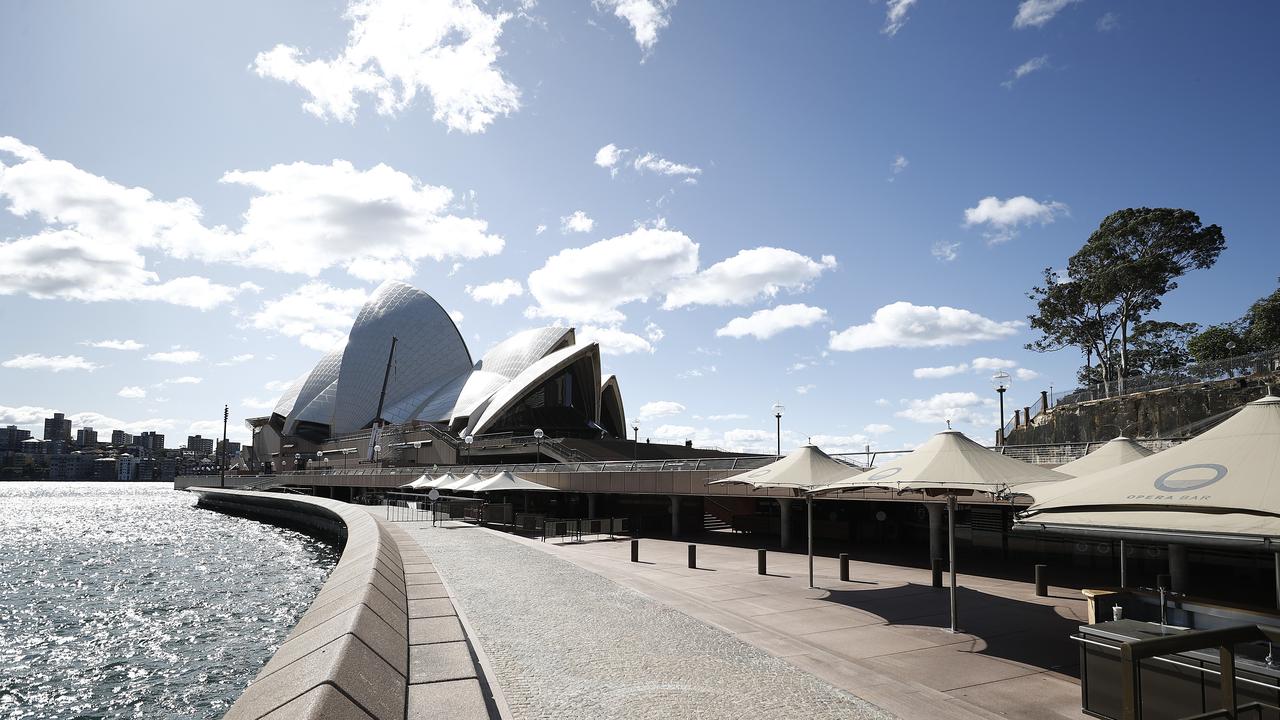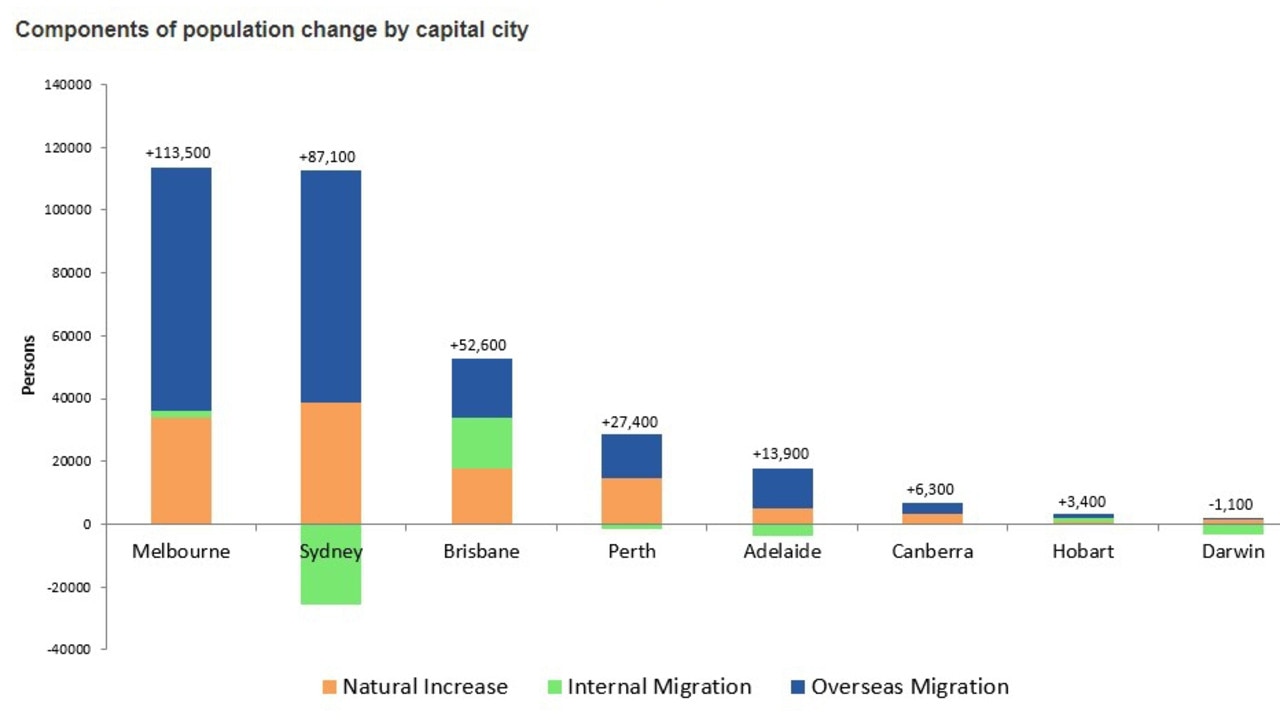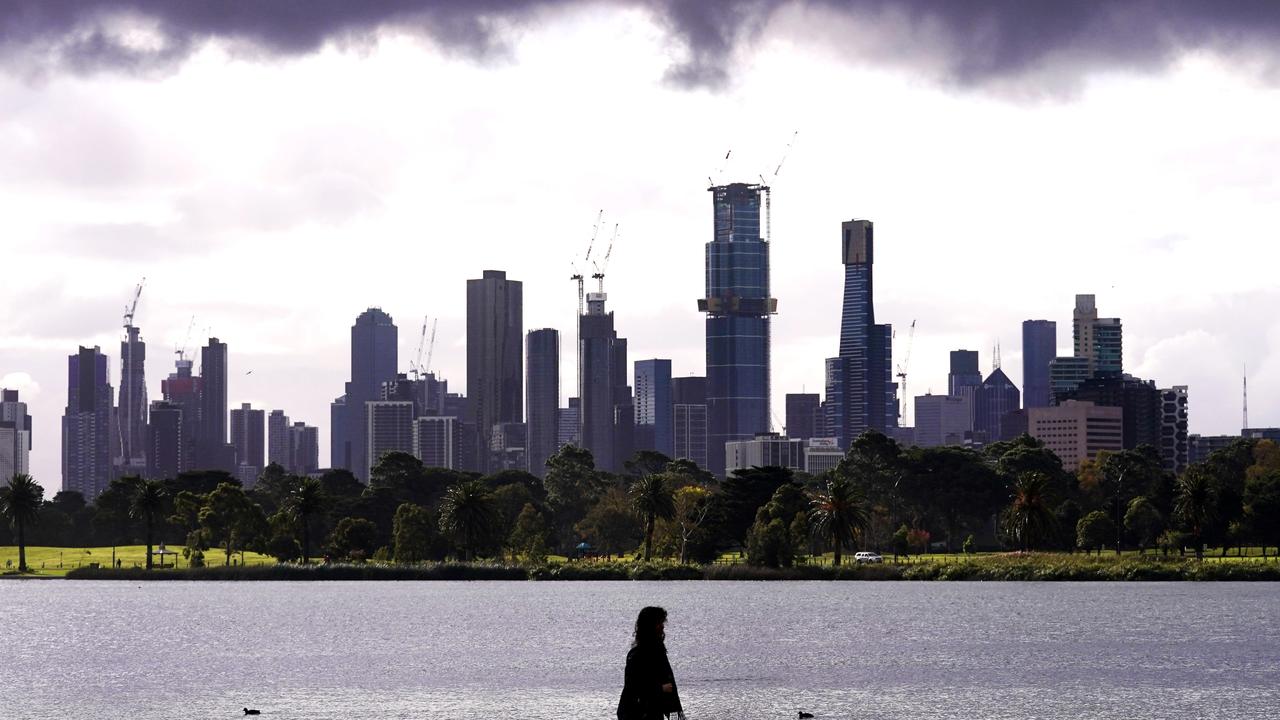Coronavirus Australia: Sydney’s population growth to shrink due to COVID-19
All our cities are set to feel pain as tourists, students and migrant numbers drop massively. But one Australian city will suffer the worst.
Right now, the centres of our major cities are eerily empty.
The tourists have vanished; theatres, museums and restaurants are closed; shops are lonely places if they’re open at all and once bustling skyscrapers full of office workers are operating on a skeleton staff with everyone else at home.
As we defeat – or at least learn to manage – coronavirus, those people will begin to return. But one Australian capital may struggle to get its mojo back more than the others in the post-COVID era.
Sydney was already facing a demographic disadvantage. With coronavirus temporarily turning off the tap of migration, there are predictions the pandemic may turbocharge Melbourne’s effort to pass its rival and become Australia’s largest city.
That could now happen in just five years’ time.
“Sydney is emptying out at the moment because of short term factors, but in the medium term it’s going to have slower population growth than we’ve seen for a generation,” Mark McCrindle, lead demographer at McCrindle research told news.com.au.
RELATED: WA, NT, ACT economies may fare better post-COVID-19
RELATED: When will lockdowns end in my state?
A huge reduction in tourism, international students and overall migration is going to be felt in our major capitals over the coming year at least. Last week, Prime Minister Scott Morrison said migration could fall as much as 85 per cent in 2021.
This will particularly sting in Melbourne and Sydney where almost 90 per cent of overseas migrants choose to head too; at least initially.
“Melbourne has challenges but Sydney’s challenges are greater,” said Mr McCrindle of both city’s chances of regaining that population momentum.

Each city’s growth will be pared back if immigration takes time to crank up again. But Melbourne has a trump card over Sydney – once people move to the Victorian capital they are likely to stay. More than that, annually around 12,000 people move from other states to Victoria, most of those to Melbourne.
Contrast that to Sydney where around 22,000 people last year fled the Harbour City for elsewhere in Australia. About 15,000 of those moved to Queensland and 6000 to Victoria.
In total, Queensland managed to nab 23,000 fresh “internal migrants”, the term for people who move interstate.
Indeed, Brisbane is relatively balanced when it comes to population with its growth made up of almost equal parts overseas migrants, internal migrants and new births. In Sydney, around 60 per cent of its growth comes from abroad.
On the flip side, the natural birthrate is quite healthy in Sydney. But Mr McCrindle said this could now become an issue too.
“In uncertain times the birthrate slows. People who were thinking of having a child might weigh up the economic viability of that and proceed cautiously.”
In addition, Sydneysiders who had dreamt of holding down a city job but living elsewhere may now get the chance.
“If anything, COVID-19 will make the population loss greater and give a boost to regional areas because it’s shown that people can get CBD jobs done without being in the CBD.

WHY PEOPLE ARE LEAVING SYDNEY
All Australian cities will have the population pressures of reduced immigration, sea changers and a slowdown in new births, but only Sydney is coming from the starting point of losing more than 20,000 people a year.
Mr McCrindle said the main driver of Sydneysiders deserting the city was the cost of living.
“Sydney is an expensive city, yet you don’t get paid more there than you do in Melbourne. The economies of Melbourne and Brisbane are as diverse as Sydney so people have other alternatives.”
Last week, Commonwealth Bank’s state of the states report, which ranks the nation’s strongest performing economies, placed NSW fourth – a slide from third in the previous analysis. Victoria remains the best performing state.
Like Mr McCrindle, chief economist of CommSec Craig James said while both NSW and Victoria could face hurdles post-COVID, the state north of the Murray had a weaker hand.
“It’s going to be more difficult for economies in the next couple of years because of the slowdown in population due to coronavirus.
“Certainly, we’ll have fewer migrants coming to Australia and they often reside in NSW or Victoria. But when they come to NSW as a first port of call, some then move to other states and territories and that’s been the situation for some time,” he told news.com.au.
Fewer people coming to Sydney would mean less demand for housing. Great for some but it could also lead to less homes being built throttling back an engine of economic growth. Fewer immigrants also means fewer talented people from overseas to fill jobs.
Mr James urged governments to invest in stimulus measures to boost local businesses, including in new infrastructure projects.
The City of Sydney, the council for the CBD and surrounding suburbs, has launched a new planning strategy to “transform the city skyline” and help “Sydney’s post COVID-19 economic recovery”.
“Now more than ever, it’s important to plan and lay the foundations for the road to recovery and our future,” said Sydney Lord Mayor Clover Moore.

MELBOURNE COULD LEAPFROG SYDNEY
An effect of the pandemic could be that Melbourne leapfrogs Sydney’s population sooner than thought.
According to the Australian Bureau of Statistics, Sydney’s population of 5.3 million is growing at 1.7 per cent. Melbourne is at 5.1 million but it’s getting bigger, faster at an annual rate of 2.3 per cent.
“That Melbourne is not as dependent as Sydney on overseas migration is a factor that could see the speeding up of the closure of the population gap between the two,” Mr McCrindle said.
“By the middle of the decade we expect Melbourne to overtake Sydney to become the number one city and be the first Australian city to 6 million people.
“We had expected Melbourne to overtake Sydney in the second half of 2026 but it could be late 2025, so coronavirus could bring that time frame forward.”
Mr McCrindle said Sydney would pick itself and dust itself off – but by then Melbourne’s march to number one might be unstoppable.
“Sydney will come back; it’s as global city, a destination for tourists and for business people. However, for the next year or so the growth from net migration will be fairly slim so it will see a massive slowdown in its population growth.”




